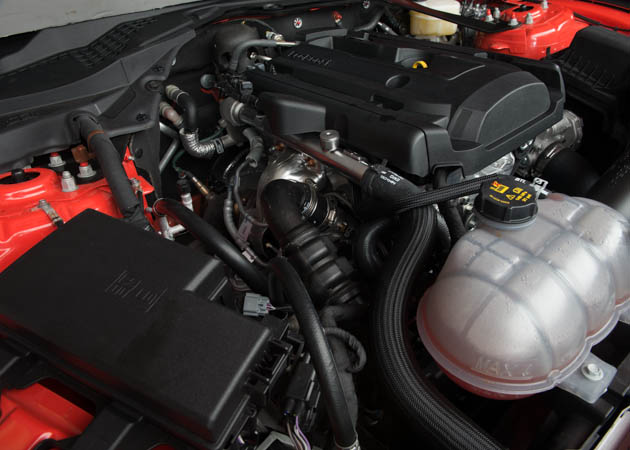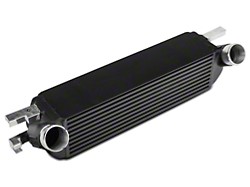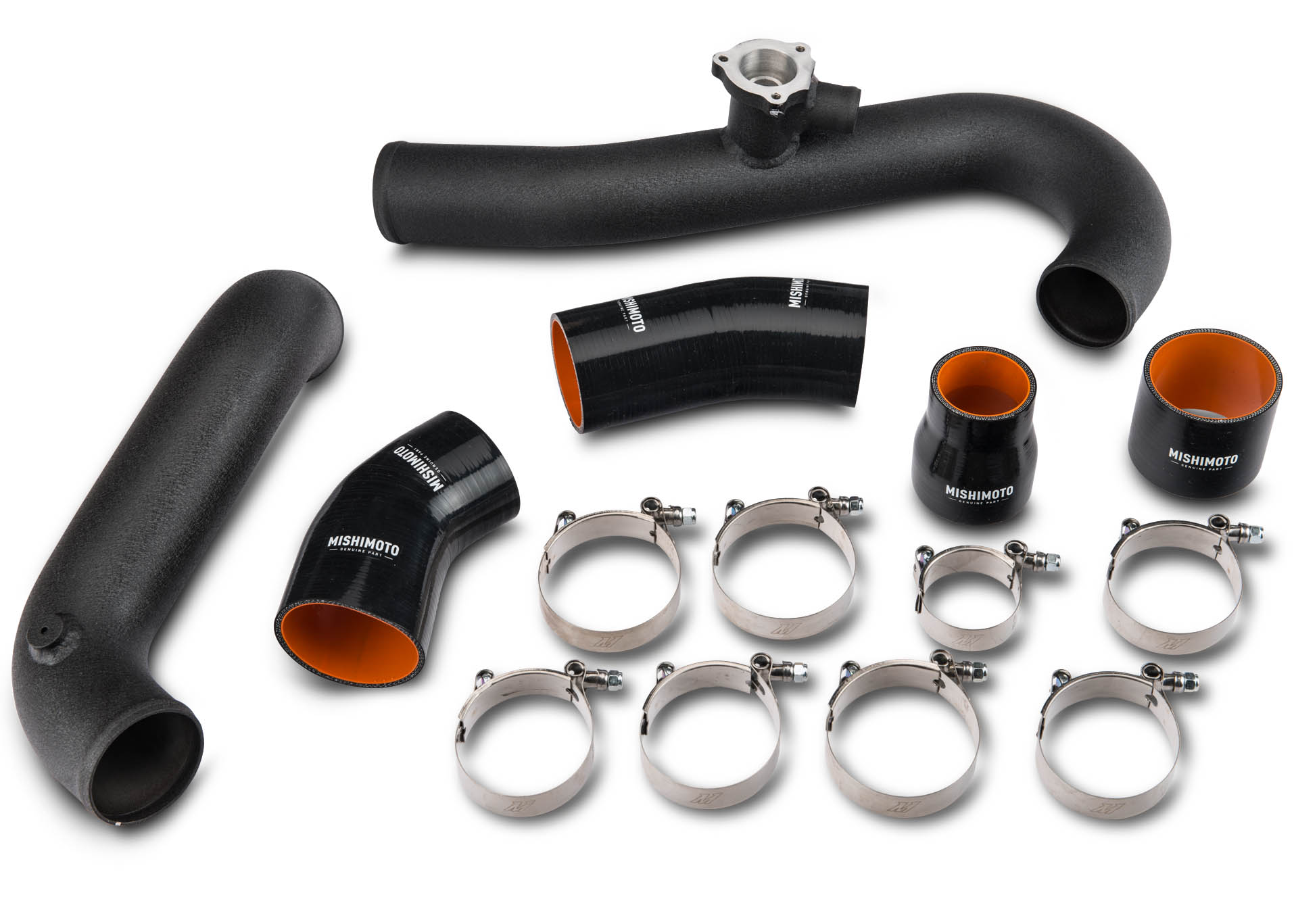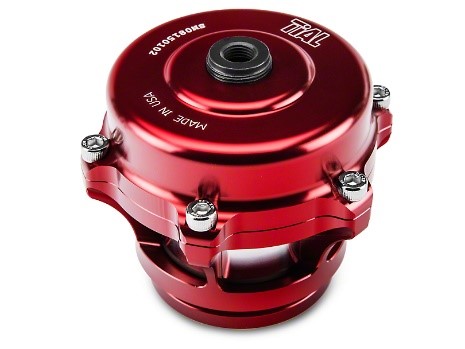The easiest way to get more power is simply to add more boost. With more boost, you can add more fuel and make more power. In the old days of turbochargers, to increase boost you simply would slap on a manual boost controller, or, if you had a little more dough to throw around, a digital one boost controller. Unfortunately, this isn’t the case for the new EcoBoost Mustang. It is a little more high tech. A boost controller for the new EcoBoost ‘Stang comes in the form of a computer reflash or tune. An aftermarket tune will reprogram the ECU into a more liberal or aggressive state, squeezing more power out of the little 4 banger and removing the nanny-like tendency of limiting power. Dyno testing has shown an increase of 30 HP peak and a 55HP curve gain (averaged numbers). Torque gains are around 45 ft-lbs peak and 60 ft-lbs across the curve. Again, all of this is coming from a 2.3L engine – super impressive, especially considering these are essentially first generation tunes for a newly released platform. With more time and testing, we can expect to see further major advancements further down the line.
While the tune is extremely crucial to the amount of boost, the physical components of the turbo system play a part as well. In all stock components, the general rule is 25 PSI is the max the EcoBoost can handle in stock form. Talk with your tuner about his or her preferences, as that is essential to the amount of PSI to be utilized.







